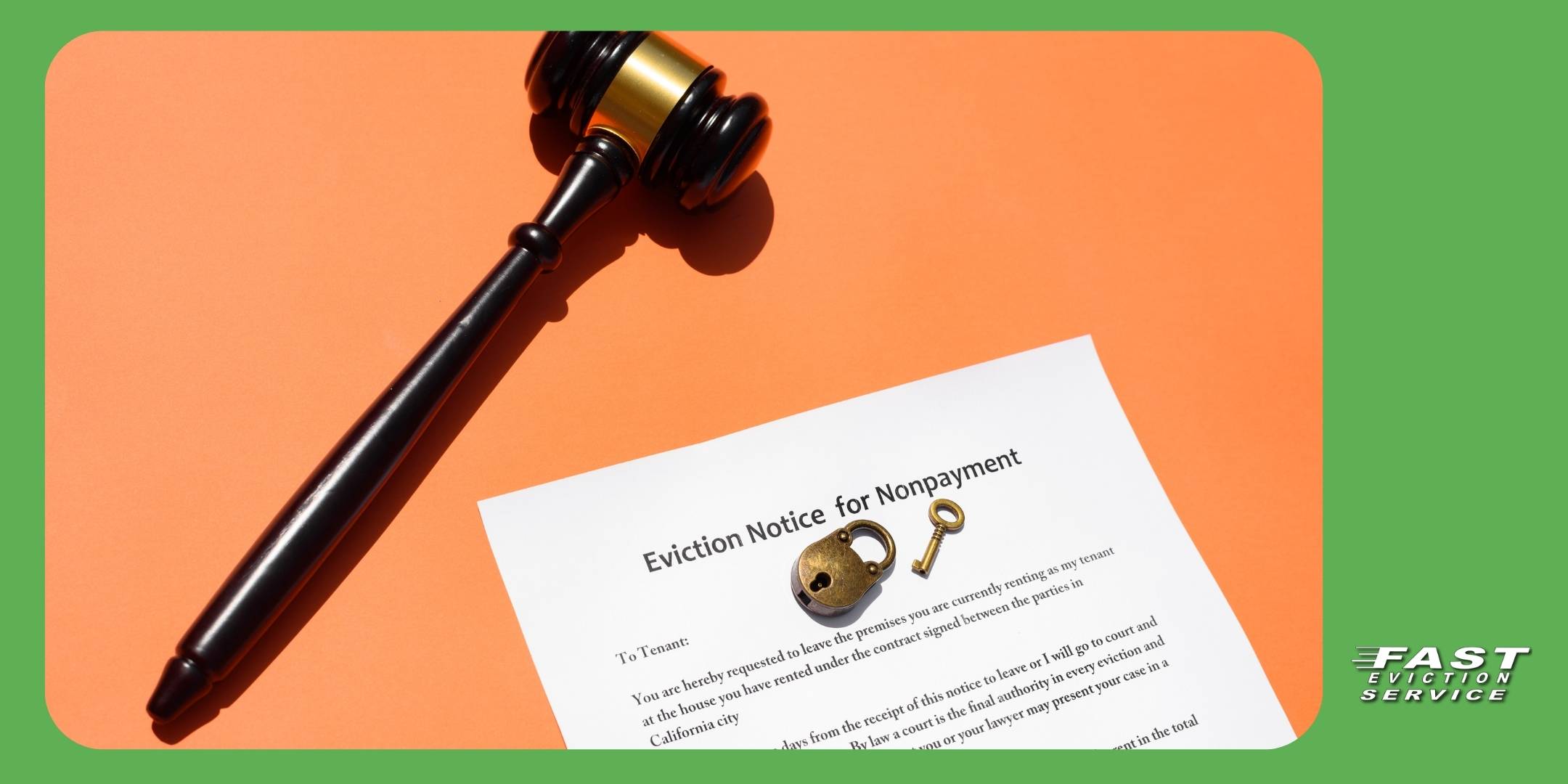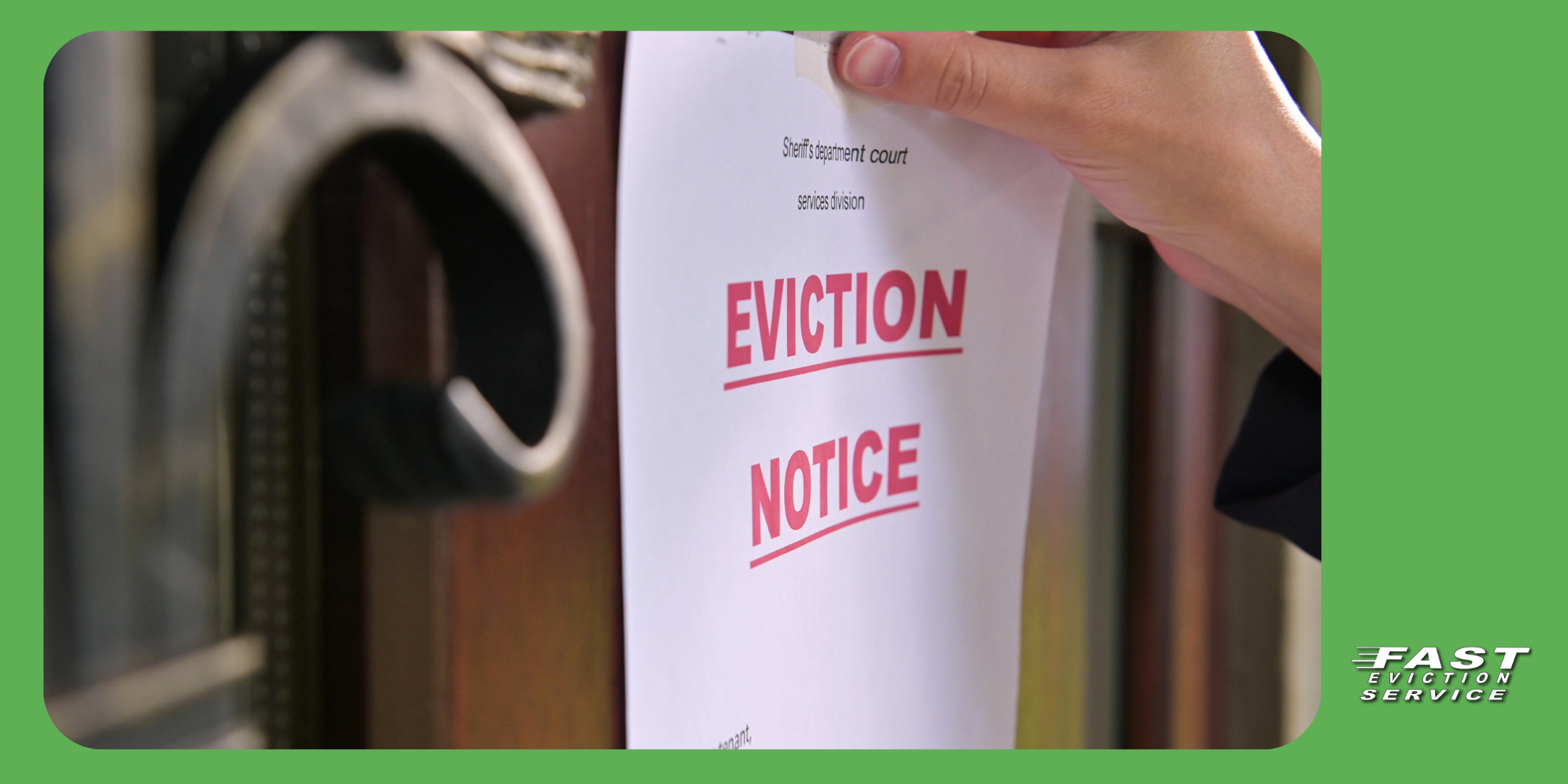Updated 04/03/25
As a landlord in California, few things are more frustrating than a tenant who won’t leave your rental property after they’ve been given proper notice. That’s where understanding what is an unlawful detainer becomes absolutely essential. An unlawful detainer is the legal action you must take to reclaim your property when a tenant refuses to leave. It’s a step-by-step court process, not just a matter of changing the locks or tossing out belongings. Knowing your rights and responsibilities can make the difference between a smooth transition and a drawn-out, expensive legal battle.

California’s eviction laws are strict, and landlords must follow the exact unlawful detainer process to avoid delays or legal pushback. Whether you’re a seasoned landlord or navigating your first eviction, this guide will provide a comprehensive roadmap to understanding and navigating the eviction process in California.
Table of Contents
- What Is the Difference Between Eviction and Unlawful Detainer?
- Legal Reasons a Landlord Can Evict a Tenant
- Understanding the California Eviction Notice Timeline
- How to File an Unlawful Detainer in California
- What Happens If a Tenant Ignores an Eviction Notice?
- The Role of the Court in the Eviction Process
- How to Serve a Writ of Possession in California
- Common Mistakes That Delay the Eviction Process
- When to Hire an Attorney for Eviction Cases
- Frequently Asked Questions
- Video
What Is the Difference Between Eviction and Unlawful Detainer?
Many landlords use the terms eviction and unlawful detainer interchangeably, but they aren’t quite the same. Eviction is the overall process of legally removing a tenant from your property. An unlawful detainer is a very specific part of that process—it’s the actual lawsuit you file in court when a tenant refuses to leave after receiving proper notice.
Think of eviction as the full story and unlawful detainer as one important chapter. Once you serve a notice to vacate in California, and the tenant doesn’t comply, filing the unlawful detainer complaint is your next step. This legal action brings the matter before a judge who will decide whether the tenant must move out. Without this court involvement, any attempt to remove a tenant can be considered illegal.
Understanding the distinction helps landlords avoid missteps and ensures you follow the California unlawful detainer steps correctly.
Legal Reasons a Landlord Can Evict a Tenant
California law provides several legal reasons for eviction. These include nonpayment of rent, lease violations, illegal activity, and the end of a lease term without renewal. Sometimes, a landlord may also evict for no-fault reasons, such as withdrawing the unit from the rental market under the Ellis Act or wanting to move a family member into the property.
However, you can’t just evict someone because you want to. You must serve the correct eviction notice, whether that’s a 3-day notice to quit in California for rent nonpayment, or a 30- or 60-day notice for no-fault cases. The reason behind the eviction will determine the type of notice and the timeline that follows.
To ensure you’re following the law, it’s critical to base the eviction on one of the recognized legal reasons for eviction and have documentation to support your claim.
Understanding the California Eviction Notice Timeline
The eviction process in California starts with giving the tenant written notice. This could be a 3-day, 30-day, or 60-day notice, depending on the reason for the eviction and how long the tenant has lived in the property.
A 3-day notice to quit is most often used when the tenant has failed to pay rent. It gives them three days to either pay up or move out. If they don’t comply, you can then file an unlawful detainer.
For no-fault evictions or breaches of lease that don’t involve rent, landlords may need to issue a 30-day or 60-day notice. In all cases, California law demands strict adherence to timelines, and any error in the notice could delay the entire eviction process in California.
How to File an Unlawful Detainer in California
If the notice period passes and the tenant hasn’t complied, the next step is filing an unlawful detainer lawsuit in your local superior court. This filing includes forms like the Summons and Complaint—which explain your case and notify the tenant.
Once the court accepts your documents, you must serve the tenant with the lawsuit. You cannot do this yourself; a third party must complete the service. This kicks off the formal unlawful detainer process and allows the tenant time to respond. If they don’t file a response within five days, you may request a default judgment.
Following these California unlawful detainer steps ensures your case moves forward properly.
What Happens If a Tenant Ignores an Eviction Notice?
If a tenant ignores your initial notice, you have the legal right to file an unlawful detainer lawsuit. But what happens if they also ignore that?
Once served with the court papers, the tenant has five days to respond. If they don’t, you can ask the court for a default judgment, which usually results in the judge ordering the tenant to leave. If they respond and contest the case, you may be given a hearing date where both sides can present their arguments.
Regardless of whether they participate, the tenant’s refusal to comply can’t stop the legal process. If the court sides with you, the sheriff will eventually enforce the judgment. For landlords wondering what happens when a tenant refuses to leave in California, this legal remedy is your answer.
The Role of the Court in the Eviction Process
The court is the neutral ground where both landlord and tenant make their case. During the hearing, you’ll need to present evidence supporting your eviction claim—like the lease agreement, proof of nonpayment, or photos of property damage.
Judges often favor procedural accuracy, so make sure every step, from notice delivery to paperwork filing, is properly executed. If the court rules in your favor, they will issue a judgment and a writ of possession in California that allows the sheriff to physically remove the tenant if needed.
The court’s involvement gives legal legitimacy to the eviction and protects landlords from accusations of wrongful eviction or harassment.
How to Serve a Writ of Possession in California
Winning your case is a major milestone, but it doesn’t end there. You must then obtain and serve a writ of possession from the court. This document instructs the sheriff to remove the tenant if they haven’t already left voluntarily.
Once the sheriff serves the writ, the tenant usually has five days to move out. If they don’t, the sheriff can return and perform a lockout. Only the sheriff can carry out this part of the eviction process in California—landlords must not take matters into their own hands.
Serving a writ of possession is the final step in regaining legal control of your property.
Common Mistakes That Delay the Eviction Process
Mistakes in paperwork, serving notices incorrectly, or skipping steps in the unlawful detainer process can cost landlords valuable time and money. The court will not accept errors or shortcuts.
Other common delays come from trying to evict tenants for reasons not supported by law, or failing to give proper notice. Even misdating a form or using the wrong notice type can send you back to square one. To avoid these setbacks, landlords should stay informed on landlord rights in California evictions and seek guidance when needed.
When to Hire an Attorney for Eviction Cases
While some landlords handle evictions on their own, complex cases often require legal help. If your tenant contests the eviction, claims discrimination, or files for bankruptcy, hiring an attorney may save you time and stress.
A qualified eviction attorney can ensure you follow the proper California unlawful detainer steps and represent you in court if things get complicated. Especially in rent-controlled areas or during pandemic-related delays, legal guidance can be crucial.
Frequently Asked Questions
What is an unlawful detainer in simple terms?
It’s a legal lawsuit a landlord files to evict a tenant who won’t leave after being given notice.
Can I evict a tenant without going to court?
No. California law requires court involvement for lawful eviction.
How long does an unlawful detainer take in California?
On average, 30 to 45 days, depending on whether the tenant contests the case.
What if my tenant doesn’t show up to court?
You can request a default judgment and proceed with a writ of possession in California.
How much does it cost to file an unlawful detainer?
Filing fees range from $240 to $450, plus service fees and possible attorney costs.






